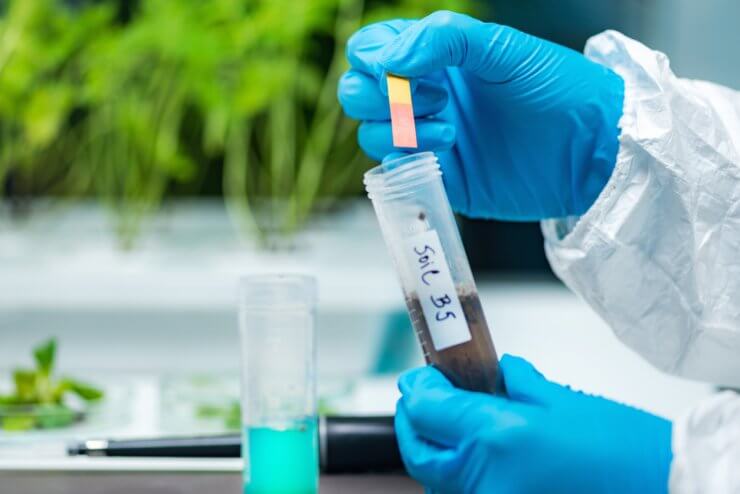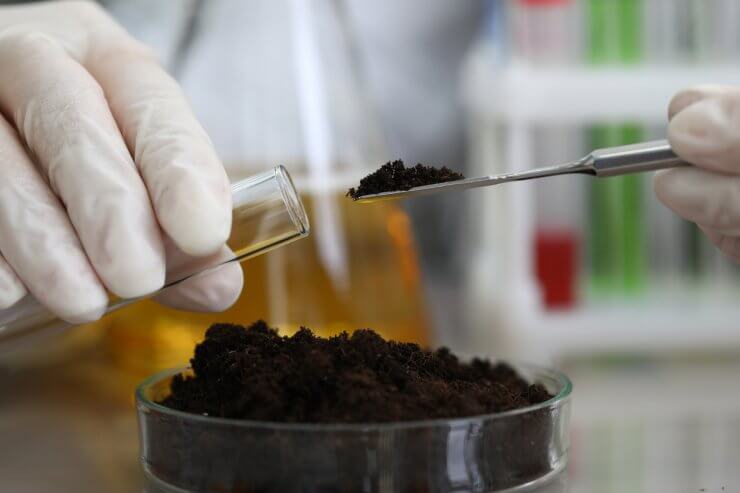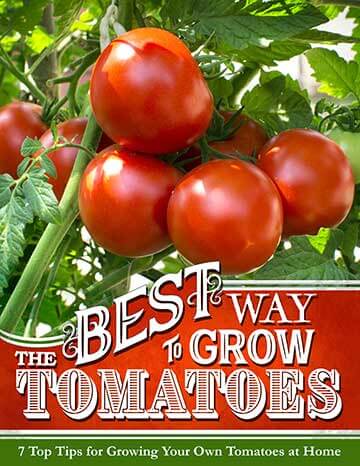
I’ll be the first to admit that I planted many a garden without soil sample testing. Looking back, that probably explains a lot. The poor production, wilting, stunted growth, and just the plain old failure to thrive were more common than I’d care to remember.
But it doesn’t need to be this way. Soil sample testing is easy, relatively inexpensive, and once you know what your soil may be lacking (or contain too much of), you can add amendments to improve the conditions for your plants.
Discover 7 top tips for growing, harvesting, and enjoying tomatoes from your home garden—when you access the FREE guide The Best Way to Grow Tomatoes, right now!

Soil sample testing for beginners
The biggest hurdle in soil sample testing is probably determining where to begin. It’s easier than ever, though, thanks to the availability of test kits in garden shops and through university extension programs.
You can find basic DIY test kits for around $15 that measure pH, as well as the levels of nitrogen, phosphorous, and potassium. Extension programs offer a range of testing and pricing, from basic pH soil sample testing to comprehensive tests that include an analysis of the levels of iron, magnesium, zinc, calcium, lead, aluminum, arsenic, and other elements and contaminants.
It’s clear you can learn a lot from these tests, but let’s look more specifically at the benefits of testing.
1. Better vegetables. This is the big one, of course. Who doesn’t want a more productive and healthy vegetable harvest? But, honestly, if you only need one benefit of soil sample testing, this is the one. There’s little secret that healthy soil is good for your vegetables, and one of the tricks to healthy soil is knowing what you need to add, whether that’s a fertilizer rich in nitrogen or something to balance the pH.
2. Safer vegetables. Did you know that lead paint and other toxic runoff can contaminate soil for miles? I don’t know about you, but I certainly appreciate the idea of serving lead- and arsenic-free vegetables at my dinner table.
3. More efficient fertilizer use. There are a lot of different fertilizers out there. Some are heavy on nitrogen; others are perfectly balanced, some have almost no nitrogen. So how do you choose the right one? Soil sample testing, of course. When you know what nutrients are already in your soil, you can easily determine where you need to go with fertilizer.
4. Limits disease. Imbalances in your soil can lay the groundwork (badda bing!) for disease. I probably don’t need to tell you why this is bad. Nor do I need to tell you why avoiding soilborne plant diseases should be your goal.
5. Saves you money. Gardening can be expensive. Certainly, there’s a big payoff, and when you even things out, you won’t find less expensive vegetables anywhere. Still, the costs add up when you’re buying seedlings, soil amendments, wood for a raised bed, tomato stakes, an irrigation system, and other gardening supplies. So why not save money where you can? Understanding your soil means you can use your gardening budget more efficiently and wisely.
Discover 7 top tips for growing, harvesting, and enjoying tomatoes from your home garden—when you access the FREE guide The Best Way to Grow Tomatoes, right now!
How do you sample and test your soil? I’d love to know. Leave a comment below and share your tactics with me!




